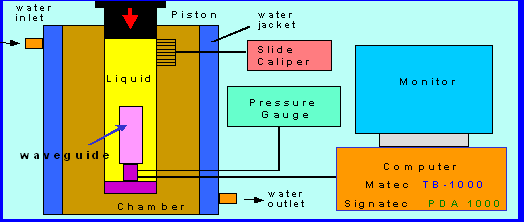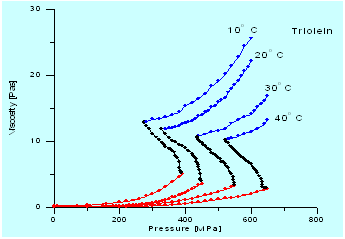Investigations performed in the Research Group of Acoustoelectronics are interdisciplinary and concern the wide subject of ultrasonic sensors and their use to study the physical properties of liquids and solids. Measurement methods developed at the Group are non-destructive, computerized and do not require large quantities of investigated liquids to carry out measurements. These methods can be used to investigate different types of liquids (organic and inorganic).
Topics of research work carried out by the Research Group of Acoustoelectronics
ultrasonic methods for examination of physical properties of liquids (vegetable oils) under high hydrostatic pressure
a) measurement of liquid viscosity using the Love and Bleustein Gulyaev method
b) measurement of the longitudinal wave velocity in the liquid
c) investigations of high-pressure phase transitions in liquids
Development of theoretical foundations of the Love wave interaction with the liquid layer. Applications to the design and construction of ultrasonic sensors of the physical properties of liquids
Inverse Methods of determining the unknown profiles of elastic parameters in nonuniform Graded Materials.
In recent years one of the main themes of the Group's work is to study (using ultrasonic methods) the physical properties of vegetable oils and their major components (triglycerides, diglycerides, fatty acids) exposed to high hydrostatic pressures. These investigations in addition to the cognitive significance are of great practical importance. High hydrostatic pressures (up to several hundred MPa) are increasingly being used for food preservation and processing. Vegetable oils are also a major component of biofuels. Therefore it is important to understand changes in their physical properties due to high pressures. Currently used classical mechanical methods of measuring viscosity are practically useless in the range of phase transformations, high-pressure phase and decompression. Very convenient for this purpose in the method for measuring the viscosity of liquids developed by the Group that uses sensors of surface acoustic waves of the Love and Bleustein-Gulyaev type. The measurements were carried out in the pressure range from atmospheric up to 700 MPa and temperatures from 10 to 50 C. The velocity measurements also identified changes in adiabatic compressibility as a function of pressure.


The second main research topic of the Team concerns the Inverse Methods to determine the elastic properties of thin films and graded materials. The investigation of the changes in the elastic properties profiles requires the use of advanced numerical and mathematical methods (optimization problems, nonlinear programming). Inverse Methods can also be used to study the physical properties of liquids loading the surface of the Love and Bleustein-Gulyaev wave waveguides.
The scientific results of the Group are a novelty and have been published in journals from the list of Philadelphia, and presented at prestigious international conferences (e.g., IEEE International Ultrasonic Symposium).